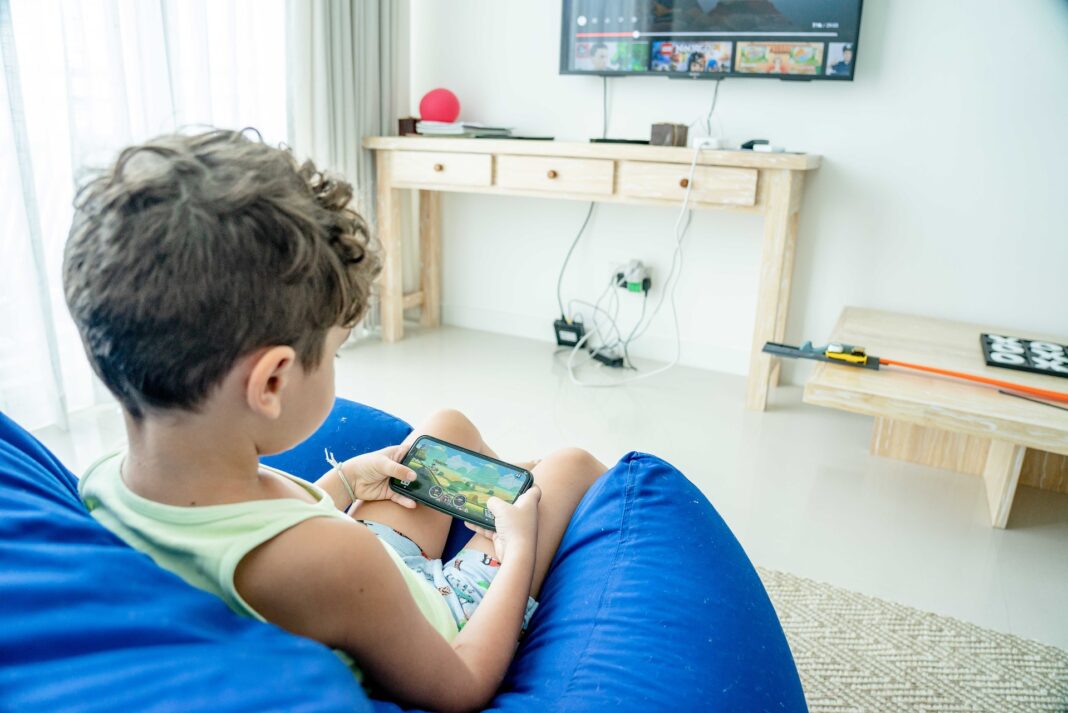A recent study held by the University of Calgary, Canada found that the screen time of children and adolescents increased by 52% during the pandemic while children’s engagement in moderate to vigorous physical activity during the pandemic decreased by 32%. According to the research published in JAMA Pediatrics, on average younger population spent 4.1 hr/day on screen compared with the pre-pandemic baseline of 2.7hr/day, which is 84 min more per day. Researchers gathered information from all around the world including Asia, Europe, North America, Australia, New Zealand, South America, and the Middle East. Results showed that the average daily screen time for children younger than 18 years old grew from 162 min to 278 minutes. Children between 12 and 18 years old reported a raise from 234 to 311 min, a substantially higher rate in screen time than any other age group.
How the pandemic affected children’s screen time
Numerous limitations were placed on the daily lives of children and adolescents globally to limit the spread of COVID-19, including school closures, restriction of extracurricular activities, social and physical distance from friends, and home quarantining. In this context, large numbers of children and families used digital devices to distract themselves. This behavior led to an increase in the time children and teens spent in front of screens. Earlier research conducted in the United States in 2021 explained that adolescents had better access to electronic gadgets such as mobile phones and laptops than their younger peers. The study also pointed out that during adolescence, there is a greater focus on both developing romantic relationships and making more friends in person and online. Because social distancing laws prevented face-to-face interactions early in the pandemic, this group used electronic devices to maintain contact with their loved ones, and therefore they had more screen time.
In a recent survey about children and teenagers’ use of electronic media, 83% of respondents said they did so in order to maintain relationships with friends and family. It showed a large rise in the amount of time they spent in front of screens: 44 minutes per day on mobile phones and 46 minutes per day on personal computers. Time spent watching television and gaming were the same. According to Jennings and Caplovitz’s report in 2021, one in five parents bought their children new electronic gadgets, most commonly computers and mobile phones, as these tools became indispensable for everyday life and social contact in the midst of the pandemic.
Children’s health and screen time
A study conducted in 2021 by Przybylski from the University of Oxford, detected minor connections between kids’ screen use and poor mental health. However, some other recent research led by Carter has found significant connections between child screen time and poor sleep, low physical activity, behavior problems and poor academic outcomes. Nevertheless, Przybylski and his team suggested that imposing a total ban on the use of electronic devices for children and adolescents is not a good strategy, as children with both less and high screen time had poorer psychosocial functioning than children with moderate exposition.
Experts indicated that while certain youngsters may develop long-term harmful screen use habits, the rise in screen time during the COVID-19 pandemic may be temporary and situational. They advised families to focus on teaching their children healthy ways to utilize technology. This can include limiting and monitoring daily use, choosing age-appropriate programs, and making time with family and friends a priority.
Furthermore, in 2021 McArthur held a study in this field and recommended encouraging young people to evaluate how they use screens to meaningfully connect with others or as an outlet for their creativity. Finally, it is not surprising that parental stress during the pandemic was linked to their children’s increased screen time. A 2014 research done by Marsh showed that the amount of time parents spend in front of a screen is strongly linked to the time kids spend, too. When trying to bring about a shift in the way how children use electronic devices, it is critical for parents to limit their own time as well.
References
Madigan S, Eirich R, Pador P, McArthur BA, Neville RD (2022) Assessment of Changes in Child and Adolescent Screen Time During the COVID-19 Pandemic: A Systematic Review and Meta-analysis. JAMA Pediatric. DOI https://doi.org/10.1001/jamapediatrics.2022.4116
Neville RD, Lakes KD, Hopkins WG, Tarantino G, Draper CE, Beck R, Madigan S (2022) Global Changes in Child and Adolescent Physical Activity During the COVID-19 Pandemic: A Systematic Review and Meta-analysis. JAMA Pediatric DOI 10.1001/jamapediatrics.2022.2313
Urberg KA, Değirmencioğlu SM, Tolson JM, Halliday-Scher K (1995) The structure of adolescent peer networks. Dev Psychol 31:540–547 DOI: https://doi.org/10.1037/0012-1649.31.4.540
Rideout V, Robb MB The role of media during the pandemic: Connection, creativity, and learning for tweens and teens. San Francisco, CA: Common Sense.
Jennings NA, Caplovitz AG (2021) Parenting and tweens’ media use during the COVID-19 pandemic. Psychology of Popular Media. https://doi.org/10.1037/ppm0000376
Li X, Vanderloo LM, Keown-Stoneman CDG, et al (2021) Screen Use and Mental Health Symptoms in Canadian Children and Youth During the COVID-19 Pandemic. JAMA Netw Open DOI: 10.1001/jamanetworkopen.2021.40875
Tandon PS, Zhou C, Johnson AM, Gonzalez ES, Kroshus E (2021) Association of Children’s Physical Activity and Screen Time With Mental Health During the COVID-19 Pandemic. JAMA Netw Open. DOI: 10.1001/jamanetworkopen.2021.27892
Przybylski AK, Orben A, Weinstein N (2020) How Much Is Too Much? Examining the Relationship Between Digital Screen Engagement and Psychosocial Functioning in a Confirmatory Cohort Study. J Am Acad Child Adolesc Psychiatry. DOI: 10.1016/j.jaac.2019.06.017
Carter B, Rees P, Hale L, Bhattacharjee D, Paradkar MS (2016) Association Between Portable Screen-Based Media Device Access or Use and Sleep Outcomes: A Systematic Review and Meta-analysis. JAMA Pediatric. DOI: 10.1001/jamapediatrics.2016.2341
Pearson N, Braithwaite RE, Biddle SJH, van Sluijs EMF, Atkin AJ (2014) Associations between sedentary behavior and physical activity in children and adolescents: a meta-analysis. Obes Rev. DOI: 10.1111/obr.12188
Eirich R, McArthur BA, Anhorn C, McGuinness C, Christakis DA, Madigan S (2022) Association of Screen Time With Internalizing and Externalizing Behavior Problems in Children 12 Years or Younger: A Systematic Review and Meta-analysis. JAMA Psychiatry. DOI: 10.1001/jamapsychiatry.2022.0155
Adelantado-Renau M, Moliner-Urdiales D, Cavero-Redondo I, Beltran-Valls MR, Martínez-Vizcaíno V, Álvarez-Bueno C (2019) Association Between Screen Media Use and Academic Performance Among Children and Adolescents: A Systematic Review and Meta-analysis. JAMA Pediatric. DOI: 10.1001/jamapediatrics.2019.3176
McArthur BA, Racine N, Browne D, McDonald S, Tough S, Madigan S (2021) Recreational screen time before and during COVID-19 in school-aged children. Acta Paediatric. DOI: 110:2805–2807
Marsh S, Foley LS, Wilks DC, Maddison R (2014) Family-based interventions for reducing sedentary time in youth: a systematic review of randomized controlled trials. Obes Rev. DOI: 10.1111/obr.12105



